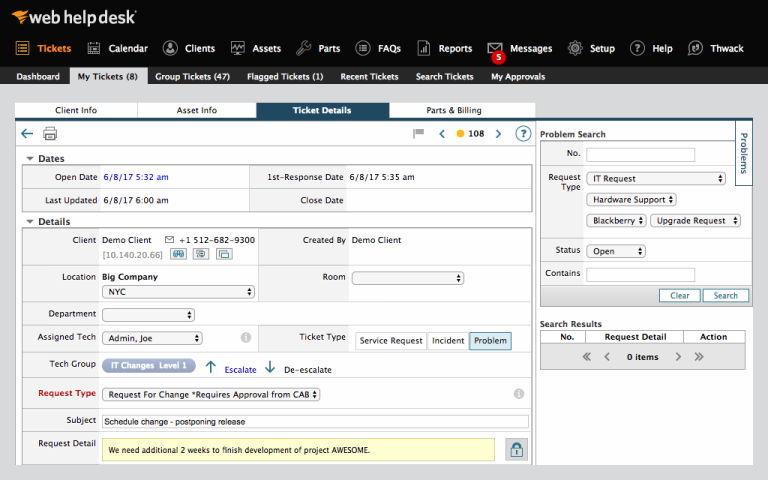What is an IT Ticketing System?
In today’s fast-paced digital world, managing IT issues efficiently is crucial for businesses of all sizes. That’s where IT ticketing systems come in. These tools play an essential role in organizing, tracking, and resolving IT problems as they arise, ensuring that companies can continue running smoothly without technical hiccups slowing them down.
In this article, we’ll explore the ins and outs of IT ticketing systems: what they are, how they work, the benefits they offer, and how to choose the right one for your business.
What is an IT Ticketing System?
An IT ticketing system is essentially a digital tool designed to track, manage, and resolve technical issues (or tickets) within an organization. These issues, ranging from software bugs to network outages, are recorded in the system as “tickets,” which are then assigned to the appropriate IT personnel for resolution.
These systems help businesses streamline their IT support process, making sure that no problem goes unresolved. Whether it’s a minor technical glitch or a significant network failure, an IT ticketing system ensures that every issue is documented, tracked, and addressed in a structured manner.
Some common core components of an IT ticketing system include:
-
Ticket creation and tracking: The ability to log issues and track their progress until they’re resolved.
-
User notifications: Updates to users on the status of their tickets.
-
Categorization and prioritization: Organizing tickets based on their type and urgency.
For a more detailed understanding of IT ticketing systems, you can check outthis comprehensive resource on IT ticketing systems.
How Does an IT Ticketing System Work?
The process behind IT ticketing systems is relatively straightforward. Whenever an IT issue arises, a user submits a ticket, either manually or through an automated system. From there, the IT team categorizes and prioritizes the ticket based on urgency.
Here’s a quick breakdown of how IT ticketing systems typically work:
-
Ticket submission: Users report issues through a portal, email, or help desk.
-
Categorization: Tickets are classified by type (e.g., software, hardware, network).
-
Prioritization: IT staff assign priority levels based on the urgency of the issue.
-
Assignment: The ticket is routed to the appropriate team or personnel for resolution.
-
Resolution: The IT staff work on resolving the issue, updating the ticket’s status throughout the process.
-
Closure: Once resolved, the ticket is marked as closed, and the user is notified.
Many IT ticketing systems also integrate with other tools, like knowledge bases, chat systems, and remote desktop applications, allowing IT teams to resolve issues more efficiently.
Benefits of Using an IT Ticketing System
IT ticketing systems bring several advantages to the table, making them an invaluable tool for businesses. Here are some of the main benefits:
Improved Efficiency in IT Support
When IT teams use ticketing systems, they can quickly sort through problems, prioritize them, and delegate tasks accordingly. This cuts down on the back-and-forth and ensures that issues are handled in the order of importance.
Better Organization and Tracking
With a centralized system in place, IT staff can track the progress of all issues at a glance. They can see which tickets are open, closed, or pending and follow up with users as needed.
Enhanced Communication with Users
Ticketing systems often come with built-in communication features that notify users about the progress of their tickets, helping keep everyone in the loop.
Key Features to Look for in an IT Ticketing System
There’s a wide variety of IT ticketing systems on the market, and each one offers its own set of features. When choosing one, it’s essential to consider the features that will best meet your business needs. Here are some key features to look for:
Automation and Workflow Management
Automation can make your IT team’s life easier by assigning tickets based on predefined rules or even automating simple tasks like password resets. Workflow management helps streamline processes by guiding the IT staff through the necessary steps for each type of ticket.
Reporting and Analytics
Robust reporting and analytics tools are essential for tracking trends in IT issues. These insights allow businesses to identify recurring problems and address them at the root, preventing future occurrences.
Customization Options
Every business is different, so your IT ticketing system should be customizable to suit your specific needs. Custom fields, templates, and workflows will make your system more flexible and scalable.
Types of IT Ticketing Systems
Choosing the right IT ticketing system depends on your organization’s structure and needs. There are different types of IT ticketing systems to consider:
Cloud-Based vs On-Premises Solutions
Cloud-based systems are hosted on the provider’s servers, offering flexibility and easy access from any location. They often come with subscription models. On-premises solutions are installed and run on your organization’s infrastructure, giving you full control over the system but requiring more upfront costs and maintenance.
Industry-Specific Systems
Some industries have unique needs when it comes to IT ticketing, such as healthcare or manufacturing, where compliance and regulatory requirements are critical. Industry-specific systems are tailored to these unique challenges.
Choosing the Right IT Ticketing System for Your Business
Selecting the best IT ticketing system can feel overwhelming, especially with so many options available. Here’s a quick guide on how to choose the right one for your organization:
Consider Business Size and Needs
A small business won’t need the same complex ticketing system as a large enterprise. Consider the volume of tickets you typically handle and choose a system that can scale with your growth.
Compare Available Options
Before committing, research and compare different IT ticketing systems. Look for customer reviews, features, and pricing models to determine which aligns with your business.
Evaluate Customer Support
No matter how great the system is, you’ll want solid customer support. Ensure that the provider offers reliable support options to help you troubleshoot any issues that arise.
Conclusion
An IT ticketing system is an essential tool for managing and resolving technical issues in an organization. By implementing one, businesses can improve their efficiency, organize IT problems, and ensure smooth communication between teams and users. Whether you’re a small business or a large enterprise, selecting the right system can help streamline your IT operations and provide better service to your users.
For more in-depth information on IT ticketing systems, check out this resource on IT ticketing systems.
FAQs
What types of businesses benefit most from an IT ticketing system?
Any business with a dedicated IT team or technical support needs can benefit from an IT ticketing system, particularly those in tech, finance, or healthcare.
How much does an IT ticketing system typically cost?
The cost varies depending on the system’s features, customization, and whether it’s cloud-based or on-premises. Prices typically range from $10 to $50 per user per month.
Can IT ticketing systems be used outside IT departments?
Yes, many businesses use these systems for customer service, HR, or facilities management to track and resolve requests efficiently.
What’s the difference between a help desk and an IT ticketing system?
A help desk usually refers to the service that provides technical support, while an IT ticketing system is the tool used to manage and resolve issues.
How long does it take to implement an IT ticketing system?
Implementation time can vary depending on the system’s complexity, but it generally takes a few weeks to fully deploy and train staff on its use.










